
Trumpism
The Intuitive Function, the Savior, and the Trickster
Download or listen to this article
Aviva Brown, June 9, 2023
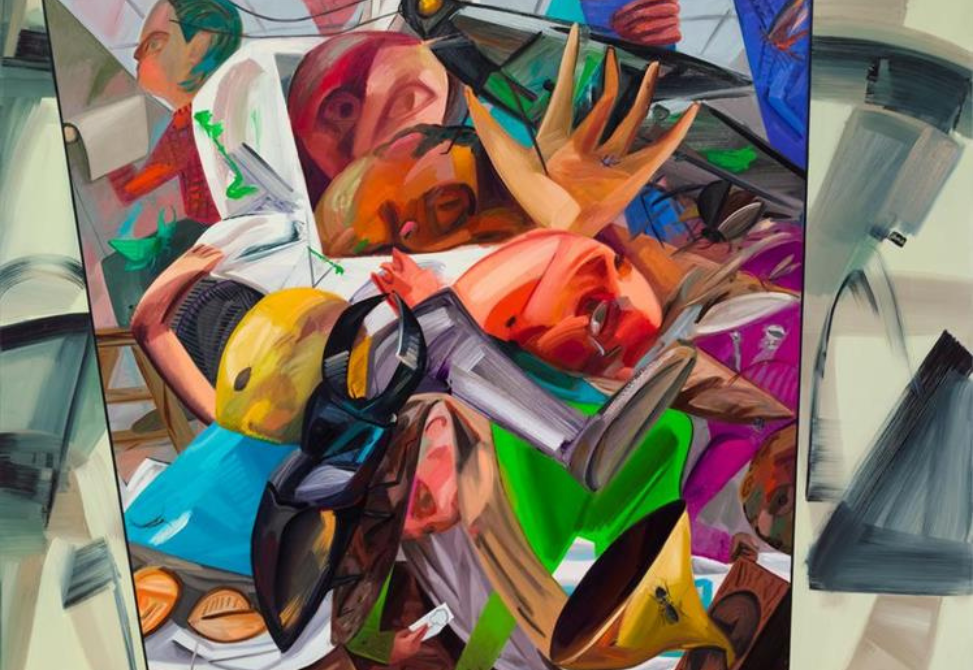
In general terms, one can apply Jungian psychology to conclude that the demonization of everyone who disagrees with Trump and his base—known as the Make America Great Again (MAGA) movement—represents a classic shadow projection. While such a characterization would not be wrong, a Jungian typological analysis provides a more granular tool to examine the psychological forces at work in Trumpism. Because every projection creates counter-projections, the response to Trump also demonizes him and his followers. In spite of this dynamic, it is undeniable that neo-Nazis have infiltrated the ranks of MAGA (Clark, 2020). What has not been reported is the way in which typological theory can be used to illuminate the subject. The unique role that intuition plays in the MAGA movement can reveal unconscious motives as well as clarify the similarities between MAGA and Nazi Germany in the 20th century and those between Hitler and Trump. Jung (1936/1970) observed that Hitler’s psychology showed evidence of archetypal possession, a state which suppresses individuality but endows the individual with great instinctual force. Similarly, Trump’s hold on his base is rooted in his ability to channel both the trickster and the eternal child, archetypes whose characteristics overlap in significant ways and whose merger in a single person amplifies their effects.
When compared with other functions, intuition has greater potential to constellate the archetype associated with it in John Beebe’s eight-function model. This is because the intuitive function is the function most closely related to the collective level of the unconscious. Jung (1948/1969) observed that “‘inborn forms of ‘intuition,’ namely the archetypes of perception and apprehension … are the necessary determinants of all psychic life” (¶ 270). Simply put, intuition functions through “its relation to the archetypes” (Jung, 1921/1971, ¶ 660). It follows that when the archetypes corresponding to introverted and extraverted intuition in a given type erupt, they do so from the deepest levels of the collective unconscious. Moreover, like any eruption from the unconscious, the powerful psychological forces unleashed can override the ego’s control and lead to inflation if the ego identifies with the material unleashed, appropriating it as its own.
The Typology of the Collective
While typology was developed with individual personality in mind, Jung recognized that a nation can also possess a particular psychology. He wrote, “the psychopathology of the masses is rooted in the psychology of the individual” (Jung, 1946/1970b, ¶ 445). Moreover, a nation’s dominant psychology can be expressed through its politics, and Jung considered Germany during World War II a prime example of this. He attributed Germany’s atrocities to its collective psychopathology rooted in an inferiority complex that took hold after it was defeated in World War I. Its sense of inferiority, Jung believed, left it susceptible to a compensatory inflation and possession by the mythic Germanic god of war, Wotan (Jung, 1936/1970, ¶¶ 371-399).
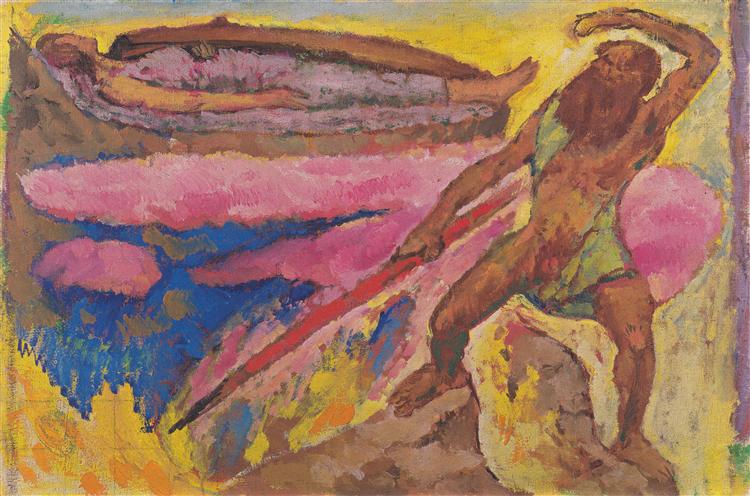
Manifest Destiny and Archetypal Possession
Jungian analyst John Giannini (2004) assessed the dominant psychological type of the United States as ESTJ. The ESTJ’s dominant extraverted thinking (Te) allowed the United States to conquer and colonize, realizing its belief in manifest destiny. As such, it represents the tireless, single-minded American work ethic and the “can-do attitude that makes difficult tasks seem feasible” (Shumate, 2021, p. 213). Tertiary extraverted intuition (Ne) allowed America to see itself as a land of endless opportunity and possibilities, fueling its entrepreneurial spirit, while auxiliary introverted sensation (Si) built its industries through its capacity for planning that “breaks down ideas into actionable steps needed to implement them” (p. 189). These national accomplishments were also facilitated by the feeling function’s inferior position in the ESTJ type, allowing any “feelings [that got] in the way of a goal” (p. 219) to be ignored. The brutal conquest of indigenous people and the embrace of slavery that helped build the nation’s wealth attest to this.
The Republican Party has been the party that best represents the American ESTJ type because of its embrace of tradition, which is the focus of the introverted sensing function (see “Collective Consciousness,” Dunlap & Hunziker, 2021). The flight of moderate Republicans from the party since the rise of Trumpism has concentrated its makeup in favor of those who wish to maintain the privilege represented by the old order. White Christian men remain the key demographic of the Republican Party, a demographic which it shares with the MAGA movement. The Democratic Party, by contrast, is more ethnically and religiously diverse (Pew Research Center, 2020).
However, a critical difference between the ESTJ type who built this country and the ESTJ that comprises the MAGA movement is the archetypal possession which Trump precipitated. A typological analysis of extraverted and introverted intuition in the MAGA movement reveals its unique susceptibility to the same archetypal forces that took hold of Nazi Germany. In Beebe’s eight-function model, extraverted intuition falls in the third position, and its opposing aspect, introverted intuition (Ni), falls in the seventh position for the ESTJ type. The third position corresponds with the archetype of the eternal child, and the seventh position corresponds with the archetype of the trickster. Both archetypes are integral to the process of psychological transformation, and their archetypal possession of the MAGA movement points to the need for psychological growth at the collective level of its psyche and in the country as a whole.
The Eternal Child’s Emotional Instability
John Beebe viewed the eternal child in the third position as possessing “an emotional volatility characteristic of a juvenile phase of development” that can lead to a so-called “third-function crisis,” which he characterized as a cycle of “expectation and disappointment” (Shumate, 2021, p. 99). Lenore Thompson (1998) viewed the third-function problem as making one susceptible to hearing what one wants to hear, and the echo chamber of hyper-partisanship has only intensified this propensity. The only voice the MAGA movement hears is that of Trump, and it hears him through the ears of the eternal child. This understanding of the third-function crisis is consistent with Jung’s (1921/1971) characterization of extraverted intuition. Jung (1921/1971) described extraverted intuition as an “unconscious perception … wholly directed to external objects.” It presents as “an attitude of expectancy” that is dependent on “external situations” (Jung, 1921/1971, ¶¶ 610, 613). The intuitive function is forward-looking and perceives in a way that wraps it in a sense of fate and, therefore, is suffocated by “stable conditions” (Jung, 1921/1971, ¶ 613). These characteristics are present in the MAGA movement. The external object for MAGA is Trump, a man who creates and thrives on unstable conditions. Its aspect of expectancy is seen most clearly in the “prophecies” of QAnon that predicted the arrest of Hillary Clinton and the restoration of Trump to the presidency (Bort, 2021; Wong, 2021). Although both predictions failed to materialize, the needs of extraverted intuition were met by Trump’s mere assertion that voter fraud was rampant in the 2020 election and by the launch of his 2024 presidential campaign. More importantly, he is often identified with the archetype of the eternal child, which corresponds to extraverted intuition in the ESTJ type.

The propensity to hero-worship manifests not only in MAGA’s worship of Trump but also in Trump’s self-worship and admiration of authoritarian leaders such as Russia’s Vladimir Putin, North Korea’s Kim Jong-Un, and China’s Xi Jinping (Cillizza & Williams, 2019). Like these world leaders, Trump answers only to himself, and he has so far managed to avoid almost all accountability. As of this writing, he has filed six bankruptcies, has twice escaped conviction in the Senate despite two House impeachments, has yet to be charged with anything for his role in fomenting the violent insurrection of January 6th, and has not yet faced any legal consequences for absconding with highly classified documents to Mar-a-Lago. His only indictment to date relates to the payment of hush money to Stormy Daniels during the 2016 presidential election, a felony-level case viewed by many as difficult to prove (Montoya-Galvez, 2023). Moreover, some have pointed out that a felony conviction would not necessarily preclude a second presidency, and the only tangible effect of the indictment has been to strengthen MAGA support and boost his fundraising (O’Brien, 2023; Whele, 2023). Were he to win re-election, he could also try to exercise what he believes is an “absolute right” (Wagner, 2018) to self-pardon for any federally-convicted crimes, which would only serve to strengthen the sense of invincibility so characteristic of the eternal child.
The controlling, self-centered, and attention-seeking qualities of the eternal child are part of everyone’s psyche (Shumate, 2021, p. 181), but when inflated they are characteristic of narcissistic personality disorders. Trump’s self-centeredness is best described by his niece, a psychologist (Trump, 2020), who said that he controls others by name-calling and bullying, engaging in delay tactics, and creating chaos that overwhelms the public’s capacity to keep track of events, allowing him to control the conversation and change the subject to suit his needs. His seemingly bottomless need for attention and adulation is obtained through his many rallies and his prolific use of social media. His habitual transgression of boundaries provokes responses that also supply him with much-needed attention, and boundary breaking is a quality also attributed to the eternal child (Shumate, 2021, p. 181). Trump’s norm-transgressing behaviors are numerous; the most dangerous ones are those which have weakened the public’s trust in the media and governmental institutions, exemplified by his demands of personal loyalty and belief that the Attorney General’s job is to do his bidding (Benen, 2018).
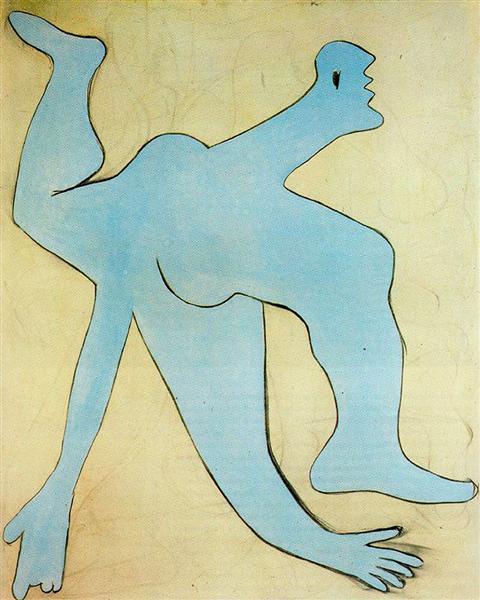
A Trickster’s Twisted Gut Instinct
The intuitive function is known for making intuitive leaps, but when this function coincides with the trickster in the seventh position, the propensity to make intuititve leaps is intensified. This magnification is crucial to understanding the power of the archetypal forces that have constellated in the MAGA movement. Introverted intuition is the function that perceives the big picture, reading “between the lines to gain insight,” and it can synthesize a worldview “from a few datapoints” (Shumate, 2021, p. 172). Beebe (2004) described introverted intuition as the function which sees “the gestalts that [move] nations … even in the midst of apparently ‘individual’ experience” (p. 96). When introverted intuition is in shadow, its emergence is often negative or immoderate, and one’s fidelity to the inner vision can leave one “unadapted to present-day reality” (Jung, 1921/1971, ¶ 662). Crucially, what most fail to grasp is that intuitive insights represent psychic, not literal, truths. Confusing the two can detach the subject from reality, just as MAGA has created its own alternative narrative based in conspiracy theories (Jung, 1921/1971, ¶¶ 655, 661).
The MAGA movement’s detachment from consensual reality is best exemplified by the QAnon movement. QAnon encourages intuitive leap-taking through its cryptic style of communication, often expressed in the form of questions. QAnon’s online post #4966 asks: “What is coded in your DNA? Who put it there? Why? … How do you protect your DNA? There is a war for your DNA” (Q, 2022). Supporters are also directed to do their own “research,” leading them down paranoid, distorted rabbit holes (LaFrance, 2020), a clear indicator of primitive intuition. These conspiracies engage the imagination by feeding the introverted intuitive function and activating the archetypal material that erupts from the collective level of the unconscious. In MAGA’s case, the vision of Trump is one of a savior while the vision of those who oppose him is “demonic” (Schmeltzer, 2022), and this archetypal image of Trump as savior has indeed triggered a reactionary, counterbalancing perception of him as demonic. Thus, MAGA has engendered an eruption in the collective psyche that is nothing less than the archetypal battle of good against evil.
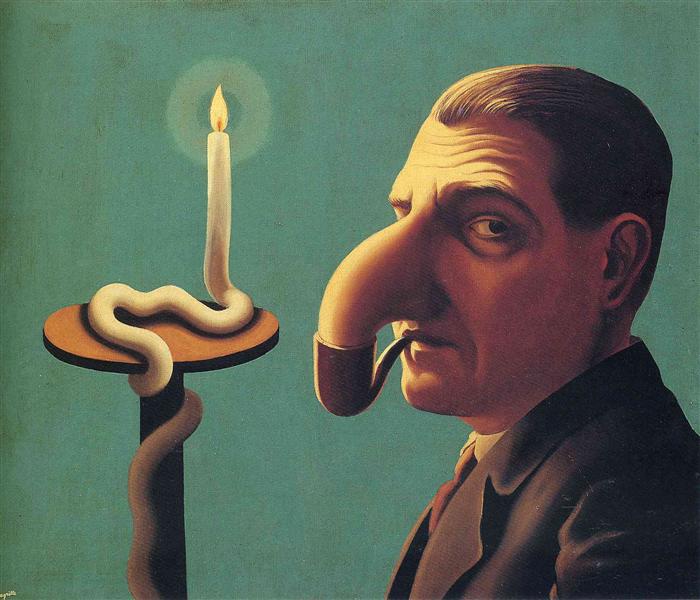
Cycling Between the Trickster and the Eternal Child
The trickster is the archetype of disruption which works to tear down the old order to make way for the new. It erupts whenever psychological growth is required, whenever the personality has become rigid or overly one-sided. It disrupts through slips of the tongue and by causing accidents, large or small. Both the eternal child and the trickster foment chaos by transgressing the boundaries which have sustained the old order. Although everyone’s psyche contains these archetypes, it is consciousness or the lack thereof that makes them either rejuvenating or deadening.
The trickster’s overlap with the eternal child is seen in the mythical Hermes, regarded as both a puer aeternus and a trickster. His originating myth portrays him as a cunning babe, a thief, and a bald-faced liar who, like Trump, was rewarded for his outrageous behavior (The Homeric Hymns, ca. 700-601 B.C.E./2006). Hermes’ cunning wins him an audience with the Olympian assembly of gods where he doubles down on his lie that he did not steal Apollo’s cattle; Trump’s cunning is expressed through his political instincts, and he is also known for doubling down on his lies. Hermes tells the farmer who witnessed his theft that “you didn’t see what you just saw … you didn’t hear what you just heard—keep quiet and you won’t get hurt” (The Homeric Hymns, ca. 700-601 B.C.E./2006, p. 30). Hermes’ remark is echoed by Trump’s admonition: “Just remember: what you’re seeing and what you’re reading is not what’s happening” (Wise, 2018). It is also noteworthy that Apollo bestowed on Hermes the gift of divination in the form of the Fates, warning him that depending on the diet they consumed, they would either “pronounce truths” or “lead you astray” (The Homeric Hymns, ca. 700-601 B.C.E./2006, pp. 67-68).
Moreover, Hermes is more playful and amoral than immoral because he intends no harm. By contrast, Trump is known for his veiled threats, warning, for instance, that if he is indicted for his mishandling of classified documents, there will be “problems … the likes of which perhaps we’ve never seen” (Ward & Desiderio, 2022), or his threat to reveal private information about Ron DeSantis if he runs for president in 2024 (Haberman, 2022). His Hermetic thievery expresses itself in his grifting—whether overcharging the Secret Service for stays at the Trump hotels, using his leadership PAC for personal use rather than its stated purpose to “help Republicans,” or raising money for a non-existent “Official Election Defense Fund” (Calmes, 2022). His greatest theft, however, is the trust in democratic institutions that he stole from the American people. Trump’s authoritarian tendencies coupled with the steady diet of distortions and lies fed to his base have divided the United States in a way not seen since the American Civil War.
The old psychological order that the trickster is attempting to break down in Trumpism is the naive belief that white privilege, particularly for Christian men, must forever be protected by the state. This is why MAGA has reacted forcefully and even violently to the Black Lives Matter movement, Critical Race Theory, and accusations of institutional racism. Each of these is perceived as an encroachment on the status quo that underpins white privilege in American society. It also explains the alt-right’s embrace of the so-called Great Replacement theory which holds that there is a plan to replace white Americans with minorities who share Democratic views (Oshin, 2022). All these issues invoke the country’s original sin of slavery, its greatest shadow which, if faced rather than denied, would bring about psychological growth.
Catastrophe Constellates the Savior
MAGA’s vociferous response to attempts to redress racism suggests the realization that the privileged status of its adherents has eroded as the voices of those historically marginalized and oppressed by the status quo have taken greater hold. The significance of this cannot be underestimated. Jung (1954/1969) believed that when the archetype of the trickster coincides with the archetype of the savior (as it does for MAGA in the figure of Trump), “some calamity…has [already] happened and been consciously understood. Only out of disaster can the longing for the savior arise”; Jung concluded that “the recognition and unavoidable integration of the shadow create such a harrowing situation that nobody but a savior” (¶ 487) can compensate for the catastrophe that has already taken place.
How such a catastrophe is experienced depends entirely on the attitude one takes to the shadow that the trickster raises to consciousness (Jung, 1946/1970b, ¶ 461). The fact that Trump’s base remains loyal to him suggests that no psychological transformation has occurred and that MAGA’s collective attitude is stuck in a fearful, defensive posture. Fearfulness, Jung (1945/1970) observed, is the psychological mechanism that makes archetypal possession possible (¶ 431). Marie-Louise von Franz (1986/2008) noted that when “the archetype moves the masses it generally leads to thinking that they have the Truth. This can lead them to despise and perhaps persecute people who think or feel differently” (p.17). Her words describe precisely the situation with the MAGA movement, whose members believe they are waging a war against the forces of evil. Jung (1946/1970a) also noted that when the “animation of the collective unconscious is due to a complete breakdown of all conscious hopes and expectations, the danger arises that the unconscious may take the place of conscious reality” (¶ 468). The end of white privilege represents just such a loss, and unless MAGA members’ fears can be quelled through some alternative to Trump, their hope for protection will remain pinned to him. When there is nothing left to lose, political violence becomes acceptable (Freedland, 2021). MAGA has yet to recognize the call of the trickster who invites it to face its shadow. Instead, the movement stays sheltered in its alternative reality. How long it can remain there depends in large part on whether Trump succeeds in his 2024 presidential bid and, if he does not, whether the movement’s adherents can once again believe that the election was somehow stolen from him. Only a total betrayal by Trump of the trust MAGA members have placed in him would create the psychological opening necessary for them to withdraw their projections, and, at least so far, their trust and loyalty remain.
To the extent that the same archetypal forces constellated in Trumpism mirror those constellated by Hitler in Nazi Germany, it is important to remember that Hitler’s first attempted coup (the Beer Hall Putsch) failed but laid the ground for his second, successful, coup. The trickster in Nazism took the form of the god Wotan who possessed the German psyche, a god identified with Mercury, the Roman equivalent of Hermes (Jung, 1936/1970, ¶ 394). The parallels between the psychological forces constellated in Trumpism and Nazism explain MAGA’s embrace of white Christian nationalism and the unprecedented rise in antisemitism since 2016 (Baker, 2022). The psychological parallels between them also make Jung’s thoughts about Hitler applicable to Trump:
[Hitler’s] pathological features—complete lack of insight into one’s own character, auto-erotic self-admiration,… denigration … of one’s fellow men, projection of the shadow, lying, falsification of reality, determination to impress by fair means or foul … —all these were united in one man. (Jung, 1945/1970, ¶¶ 418-419)
So, too, these qualities have united in Trump, facilitated by the intuitive function’s activation of the eternal child and the trickster archetypes. Jung warned:
When such [collective mythological] symbols occur in a large number of individuals and are not understood … a mob is formed. Its leader will soon be found in the individual who has … the least sense of responsibility and, because of his inferiority, the greatest will to power. He will let loose everything that is ready to burst forth, and the mob will follow with the irresistible force of an avalanche. (Jung, 1946/1970b, ¶ 449)
This description applies as much to Trump as it did to Hitler. Trump’s grandiosity compensates for a deep-seated inferiority complex. His narcissistic will to power is evident in his belief that as president, he can do anything he wants (Brice-Saddler, 2019). His lack of responsibility is demonstrated by his belief that he bore no responsibility for the COVID-19 pandemic or the insurrection of January 6th (Green, 2022; Liptak & Klein, 2021). Even Trump’s habitual lying is a characteristic he shares with Hitler, whom Jung diagnosed as suffering from pseudologia phantastica, that is, pathological lying (DePaulo, 2017; Jung, 1945/1970, ¶ 419). Finally, like Hitler, Trump has significantly reshaped political history in a relatively short period of time. As Hillman (2005) observed, “When the puer spirit falls into the public arena, it hurries history along” (p. 53). This is because, according to Jung, “In the collective unconscious of the individual, history prepares itself….The archetypal image which the moment requires gets into life, and everybody is seized by it” (Jung, 1935/1976, ¶ 371).
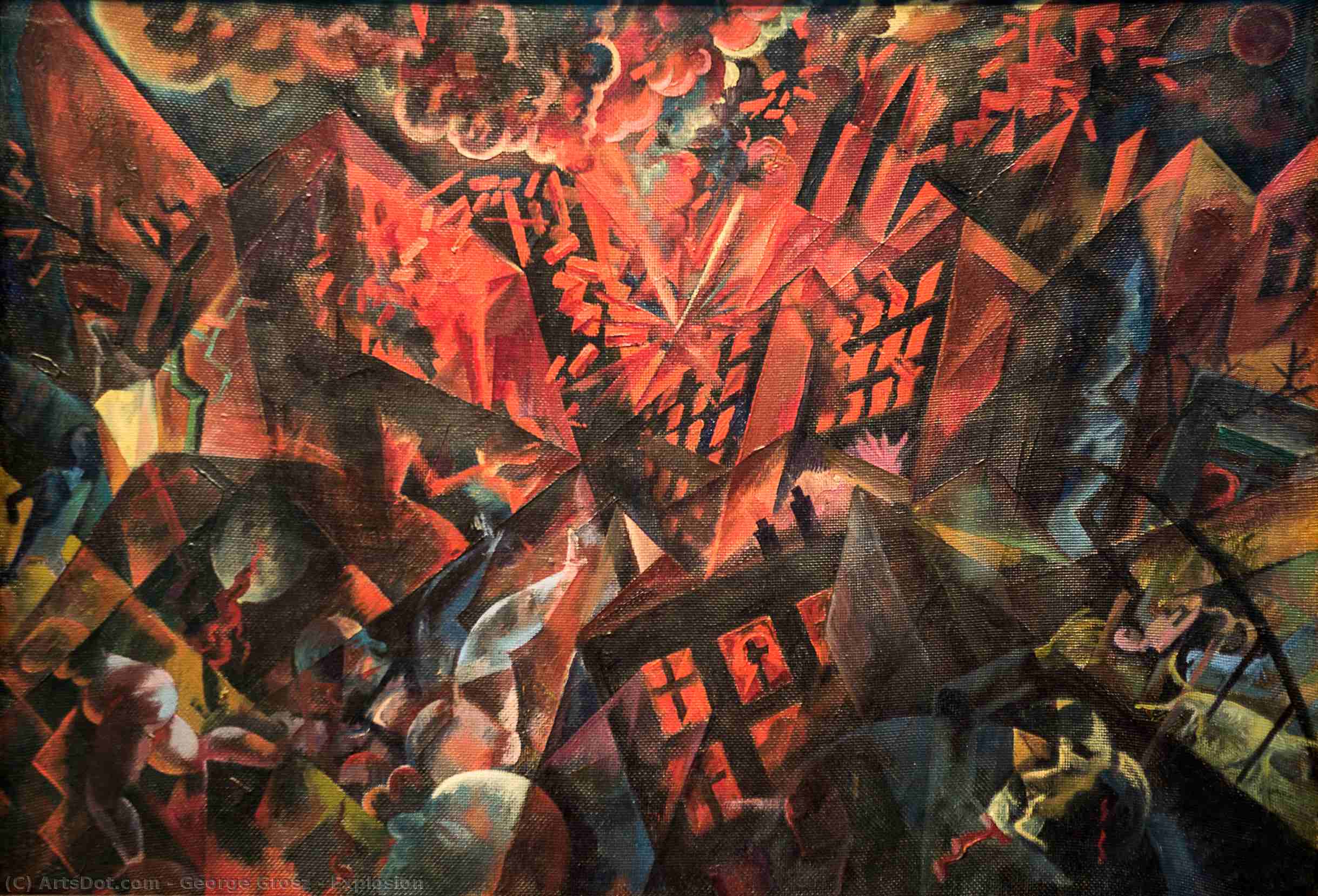
If Trump wins the 2024 Republican nomination, the Republican Party will face a dilemma: either unite behind him and possibly lose the election, or abandon him and risk that another Democrat will be elected. This double bind is the handiwork of the trickster who is the “quintessential archetype of the paradox” (Shumate, 2021, p. 103). Thus, the trickster is also known as the escape artist, and it is, therefore, worth keeping in mind that Trump’s presidential bid may be at least partly motivated by his belief that a second presidential term will help him to escape any legal accountability for possible criminal actions that are still pending investigation by the U.S. Department of Justice and the District Attorney for Fulton County in the state of Georgia.
A typological analysis of the psychological forces constellated in Trumpism helps explain the situation the United States finds itself in today. If Jung was correct that the co-occurrence of the savior and trickster archetypes represents an awareness that a catastrophe has already happened that must be consciously integrated, then the continued loyalty of Trump’s base (and even much of the rest of the Republican Party) is a bad sign. Jung famously said:
The psychological rule says that when an inner situation is not made conscious, it happens outside as fate …. [W]hen the individual … does not become conscious of his inner opposite [i.e., his shadow], the world must perforce act out the conflict and be torn into opposing halves. (Jung, 1951/1968, ¶ 126)
In the case of World War II, the world was torn apart by the so-called Aryan “blond beast” (Jung, 1946/1970b, ¶ 447). In the case of Trumpism, the country could be torn in half by a second civil war. The holocaust’s admonition to “never forget” is not enough to avert another catastrophe; only a psychological—as opposed to a political—understanding of the forces at work in the collective psyche can help prevent it. The psychological solution is for all of us to make conscious the eternal child and the trickster within; if we don’t, the external world will express them for us.
References
Acosta. J. (2019, June 11). How Trump’s ‘fake news’ rhetoric has gotten out of control. CNN. https://www.cnn.com/2019/06/11/politics/enemy-of-the-people-jim-acosta-donald-trump/index.html
Baker, P. (2022, November 29). Trump’s far right embrace. The New York Times. https://www.nytimes.com/2022/11/29/briefing/nick-fuentes-trump.html
Beebe, J. (2004). Understanding consciousness through the theory of psychological types. In J. Cambray & L. Carter (Eds.), Analytical psychology: Contemporary perspectives in Jungian analysis (pp. 83-115). Brunner-Routledge.
Beebe, J. (2006). Evolving the eight-function model. Australian Psychological Type Review, 8(1), 117–125.
Benen, S. (2018, February 1). Trump’s loyalty demands pose key test for Justice Department. MSNBC, https://www.msnbc.com/rachel-maddow-show/trumps-loyalty-demands-pose-key-test-justice-department-msna1063721
Bort, R. (2021, November 25). A guide to all the times Mike Lindell and QAnon promised Trump would definitely be back in the White House. Rolling Stone. https://www.rollingstone.com/politics/politics-news/trump-reinstatement-mike-lindell-thanksgiving-1262796/
Brice-Saddler, M. (2019, July 23). While bemoaning Mueller probe, Trump falsely says the Constitution gives him “the right to do whatever I want.” The Washington Post. https://www.washingtonpost.com/politics/2019/07/23/trump-falsely-tells-auditorium-full-teens-constitution-gives-him-right-do-whatever-i-want/
Brownstein, R. (2022, December 2). The GOP can’t hide from extremism. The Atlantic. https://www.theatlantic.com/politics/archive/2022/12/gop-lawmakers-distancing-extremism-trump-fuentes-ye/672328/
Calmes, J. (2022, August 26). Column: Trump’s latest gifts – the “Save America PAC” $100-million hoard. Los Angeles Times. https://www.latimes.com/opinion/story/2022-08-26/republican-party-donald-trump-fundraising
Cillizza, C., & Williams, B. (2019, July 2). 15 times Donald Trump praised authoritarian rulers. CNN, https://www.cnn.com/2019/07/02/politics/donald-trump-dictators-kim-jong-un-vladimir-putin/index.html
Clark, S. (2020). How white supremacy returned to mainstream politics. Center for American Progress. https://www.americanprogress.org/article/white-supremacy-returned-mainstream-politics/
Demirjian, K., & Olorunnipa, T. (2022, December 3). White House rebukes Trump’s suggestion to suspend Constitution over 2020 election. The Washington Post. https://www.washingtonpost.com/politics/2022/12/03/trump-constitution-truth-social/
DePaulo, B. (2017, December 8). Commentary: I study liars. I’ve never seen one like Donald Trump. Chicago Tribune. https://www.chicagotribune.com/opinion/commentary/ct-donald-trump-liar-20171208-story.html
Dunlap, P., & Hunziker, M. (2021, December 28). Collective consciousness: The cultural typology model. Personality Type in Depth.
Freedland, J. (2021, December 1). The Republican Party is embracing violence in the name of Trump. The Guardian. https://www.theguardian.com/commentisfree/2021/dec/03/republican-party-democracy-political-violence-trumpism
Giannini, J. (2004). Compass of the Soul. Center for Applications of Psychological Type.
Godfrey, E. (2022, December 1). The bottom-up election-denial strategy. The Atlantic. https://www.theatlantic.com/politics/archive/2022/12/election-results-certification-refusal-republicans-cochise-county-arizona/672310/
Green, L. (2022, October 30). The Trump tapes: Bob Woodward’s chilling warning for US democracy. The Guardian. https://www.theguardian.com/books/2022/oct/30/the-trump-tapes-bob-woodward-us-democracy
Haberman, M. (2022, November 8). Trump threatens to reveal unflattering information about DeSantis if he runs. The New York Times. https://www.nytimes.com/2022/11/08/us/politics/trump-desantis-2024.html
Haberman, M., & Feuer, A. (2022, November 25). Trump’s latest dinner guest: Nick Fuentes, white supremacist. The New York Times. https://www.nytimes.com/2022/11/25/us/politics/trump-nick-fuentes-dinner.html
Hillman, J. (2005). Senex & puer. Spring Publications.
The Homeric hymns: A translation (Rev. 2nd. ed.) (C. Boer, Trans.). (2006). Asphodel Press. (Original work published 700-601 B.C.E.)
Jacobs, T. (2017). Racism xenophobia, and Trump’s win. Pacific Standard. https://psmag.com/news/racism-xenophobia-and-trumps-win
Jung, C. G. (1921/1971). Psychological types (R. F. C. Hull, Trans.) (H. Read et al. Eds.), The collected works of C. G. Jung (Vol. 6). Princeton University Press. https://doi.org/10.1515/9781400850860
Jung, C. G. (1935/1976). The Tavistock lectures: On the theory and practice of analytical psychology (R. F. C. Hull, Trans.). In H. Read et al. (Eds.), The collected works of C. G. Jung (Vol. 18). Princeton University Press. https://doi.org/10.1515/9781400851010.1
Jung, C. G. (1936/1970). Wotan (R. F. C. Hull, Trans.). In H. Read et al. (Eds.), The collected works of C. G. Jung (Vol. 10). Princeton University Press. https://doi.org/10.1515/9781400850976.179
Jung, C. G. (1945/1970). After the catastrophe (R. F. C. Hull, Trans.). In H. Read et al. (Eds.), The collected works of C. G. Jung (Vol. 10). Princeton University Press. https://doi.org/10.1515/9781400850976.194
Jung, C. G. (1946/1970a). Epilogue to essays on contemporary events (R. F. C. Hull, Trans.). In H. Read et al. (Eds.), The collected works of C. G. Jung (Vol. 10). Princeton University Press. https://doi.org/10.1515/9781400850976.227
Jung, C. G. (1946/1970b). The fight with the shadow (R. F. C. Hull, Trans.). In H. Read et al. (Eds.), The collected works of C. G. Jung (Vol. 10). Princeton University Press. https://doi.org/10.1515/9781400850976.218
Jung, C. G. (1948/1969). Instinct and the unconscious (R. F. C. Hull, Trans.). In H. Read et al. (Eds.), The collected works of C. G. Jung (Vol. 8). Princeton University Press. https://doi.org/10.1515/9781400850952.129
Jung, C. G. (1951/1968). Christ, a symbol of the self (R. F. C. Hull, Trans.) In H. Read et al. (Eds.), The collected works of C. G. Jung (Vol. 9). Princeton University Press. https://doi.org/10.1515/9781400851058
Jung, C. G. (1954/1969). On the psychology of the trickster-figure (R. F. C. Hull, Trans.). In H. Read et al. (Eds.), The collected works of C. G. Jung (Vol. 9). Princeton University Press. https://doi.org/10.1515/9781400850969.255
Jurecic, Q. (2022, November 29). The Supreme Court’s case that’s all about Donald Trump. The Atlantic. https://www.theatlantic.com/ideas/archive/2022/11/moore-v-harper-scotus-elections-amicus-brief/672281/
Kessler, G., Rizzo, S., & Kelly, M. (2020, July 13). President Trump has made 20,000 false or misleading claims. The Washington Post. https://www.washingtonpost.com/politics/2020/07/13/president-trump-has-made-more-than-20000-false-or-misleading-claims/
Krogstad, J., Dunn, A., & Passel, J. (2021, August 23). Most Americans say the declining share of White people in the U.S. is neither good nor bad for society. Pew Research Center. https://www.pewresearch.org/fact-tank/2021/08/23/most-americans-say-the-declining-share-of-white-people-in-the-u-s-is-neither-good-nor-bad-for-society/#:~:text=Immigrants%20account%20for%20a%20significantly,according%20to%20Census%20Bureau%20projections
LaFrance, A. (2020, September 24). The prophecies of Q. The Atlantic. https://www.theatlantic.com/magazine/archive/2020/06/qanon-nothing-can-stop-what-is-coming/610567/
Liptak, K., & Klein, B. (2021, January 12). Defiant Trump denounces violence but takes no responsibility for inciting deadly riot. CNN. https://www.cnn.com/2021/01/12/politics/donald-trump-riot-impeachment/index.html
Lozano, A. (2020, September 12). Trump accuses Democrats of ‘rigging’ the November election during Nevada rally. NBC News. https://www.nbcnews.com/politics/2020-election/trump-accuses-democrats-rigging-november-election-during-nevada-rally-n1239969
Montoya-Galvez, C. (2023, April 6). Legal experts say Trump felony charges will be difficult to prove. CBS News. https://www.cbsnews.com/news/trump-felony-charges-legal-experts-indictment-falsifying-business-records/
Oshin, O. (2022, May 24). 6 in 10 Trump voters agree with core tenet of great replacement theory: survey. The Hill. https://thehill.com/homenews/state-watch/3499877-6-in-10-trump-voters-agree-with-core-tenet-of-great-replacement-theory-survey/
O’Brien, R. D. (2023, April 16). Trump’s fund-raising: From sluggish to surging after indictment. The New York Times. https://www.nytimes.com/2023/04/16/us/politics/donald-trump-fund-raising.html
Pew Research Center. (2020, June 2). In changing U.S. electorate, race and education remain stark dividing lines: Gender gap in party identification remains widest in a quarter century. https://www.pewresearch.org/politics/2020/06/02/in-changing-u-s-electorate-race-and-education-remain-stark-dividing-lines/
Q. (2022, November 27). What is coded in your DNA? QAnon. https://qanon.pub/
Schmeltzer, E. (2022, September 21). MAGA’s disturbing transformation into a church, Trump into its savior. Newsweek .https://www.newsweek.com/magas-disturbing-transformation-church-trump-its-savior-opinion-1744661
Scully, R. (2022, September 4). Trump calls Biden “an enemy of the state.” The Hill. https://thehill.com/homenews/state-watch/3628611-trump-calls-biden-an-enemy-of-the-state/
Shear, M., & Stall, S. (2021, May 26). Trump, in taped call, pressured Georgia official to “find” votes to overturn election. The New York Times. https://www.nytimes.com/2021/01/03/us/politics/trump-raffensperger-call-georgia.html
Shumate, C. (2021). Projection and personality development via the eight-function model. Routledge.
Stancil, K. (2022, November 9). 210+ GOP candidates who spread doubt and lies about 2020 election won their races. Common Dreams. https://www.commondreams.org/news/2022/11/09/210-gop-candidates-who-spread-doubt-and-lies-about-2020-election-won-their-races
Stancil, K. (2022, December 4). GOP silence on Trump’s call to axe constitution reveals “full embrace of fascism”: House Dem. Common Dreams. https://www.commondreams.org/news/2022/12/04/gop-silence-trumps-call-axe-constitution-reveals-full-embrace-fascism-house-dem
Tharoor, I. (2022, August 19). Trump’s personality cult and the erosion of U.S. democracy. The Washington Post. https://www.washingtonpost.com/world/2022/08/19/trump-cult-of-personality-democracy-erosion-united-states/
Thomson, L. (1998). Personality type: An owner’s manual. Shambhala Publications.
Timm, J. (2016, October 7). Trump on hot mic: “When you’re a star…you can do anything” to women. NBC News. https://www.nbcnews.com/politics/2016-election/trump-hot-mic-when-you-re-star-you-can-do-n662116
Trump, M. L. (2020). Too much and never enough: How my family created the world’s most dangerous man. Simon & Schuster.
von Franz, M.-L. (2008). C. G. Jung’s rehabilitation of the feeling function in our civilization. Jung Journal, 2(2), 9–20. https://doi.org/10.1525/jung.2008.2.2.9 (Original work published 1986)
Wagner, J. (2018, June 5). Trump says he has “absolute right” to pardon himself of federal crimes but denies any wrongdoing. The Washington Post. https://www.washingtonpost.com/politics/trump-says-he-has-absolute-right-to-pardon-himself-of-federal-crimes-but-denies-any-wrongdoing/2018/06/04/3d78348c-67dd-11e8-bea7-c8eb28bc52b1_story.html
Ward, M., & Desiderio, A. (2022, September 15). Trump warns of “problems” like “we’ve never seen” if he’s indicted. Politico. https://www.politico.com/news/2022/09/15/trump-warns-of-problems-like-weve-never-seen-if-hes-indicted-00056911
Wehle, K. (2023, April 14). Yes, he could still be president from prison. The Atlantic. https://www.theatlantic.com/ideas/archive/2023/04/if-convicted-could-trump-still-be-president/673708/
Wise, J. (2018, July 24). Trump: What you’re seeing in the news “is not what’s happening.” The Hill. https://thehill.com/homenews/administration/398606-trump-what-youre-seeing-in-the-news-is-not-whats-happening-inbox-x/
Wong, J. C. (2020, August 25). QAnon explained: The antisemitic conspiracy theory gaining traction around the world. The Guardian. https://www.theguardian.com/us-news/2020/aug/25/qanon-conspiracy-theory-explained-trump-what-is
Wong, J. C. (2021, January 20). QAnon’s “Great Awakening” failed to materialize. What’s next could be worse. The Guardian. https://www.theguardian.com/us-news/2021/jan/20/qanon-biden-inauguration-trump-antisemitism-white-nationalism
Images
Dix, O. (1949). The resurrection. Retrieved from wikiart.org
Dubuffet, J. (1961). Figure in red. Retrieved from wikiart.org
Grosz, G. (1917). Explosion. Retrieved from wikioo.org
Magritte, R. (1936). The philosopher’s lamp. Retrieved from wikiart.org
Moser, K. (1915). Wotan and Brunhilde. Retrieved from wikiart.org
Picasso, P. (1929). A blue acrobat. Retrieved from wikiart.org
Schutz, D. (2017). Elevator. Retrieved from wikiart.org


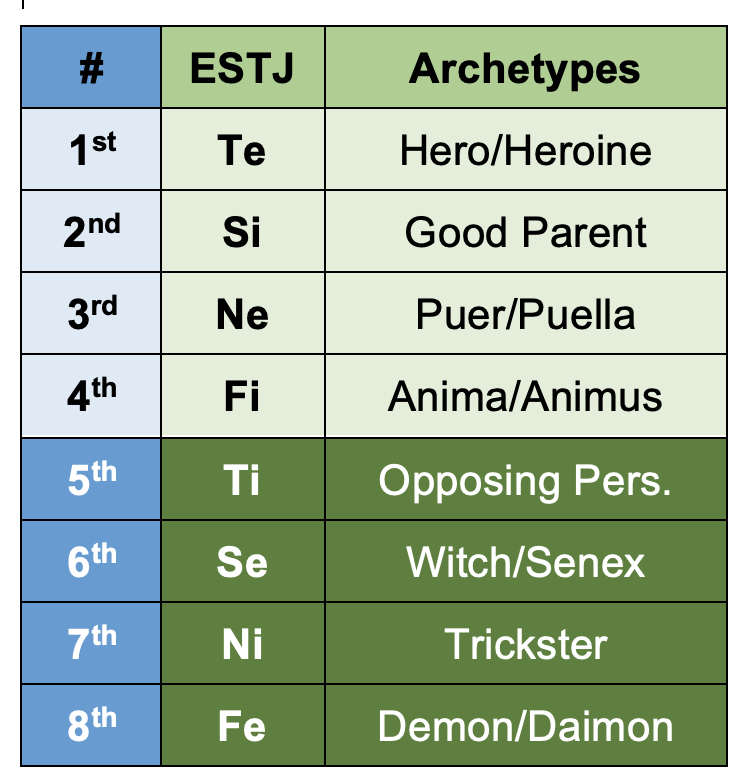



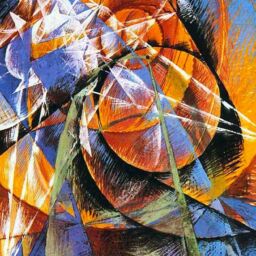


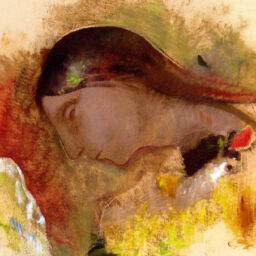




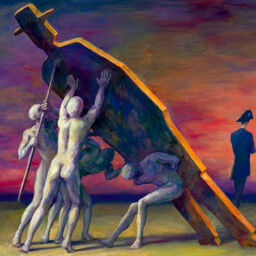


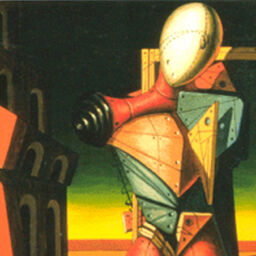


For those interested in a different approach to the subject, I suggest “Overcoming One-Sidedness in Self and Society” by Jungian scholar Steve Myers. Also, a fine example of bipartisan leadership is the film, “Mandela: Long Walk to Freedom”.
As for the requisite Jung quote:
“It is impossible to convince anybody that the conflict is in the psyche of every individual, since he is now quite sure where his enemy is. [Therefore] the conflict… takes
place on the plane of projection in the form of political tension.” (C.W. 14, p. 363).
As we are all human, none of us is immune to this, in its many forms.
Dario Nardi: That’s a sharp and Jungian insight, and I too had identified Steve Myers as a Jungian scholar to challenge how Jung himself has challenged us to embrace, overcome, and deal better with the polarity of opposites — especially in our politically and polarized times. Focusing on Trump is aiming very low — whether we are pro-Trump or anti-Trump, given that narcissistic Trump loves attention, whether it’s positive (from the far Right) or negative (from the far Left). Thanks for suggesting a better alternative, which I am pursuing as a book publication with other PTD contributors here. Zack Kampf and I recently published here as part of our forthcoming book with Ellen Robinson: https://typeindepth.org/philosophical-synchronicity/